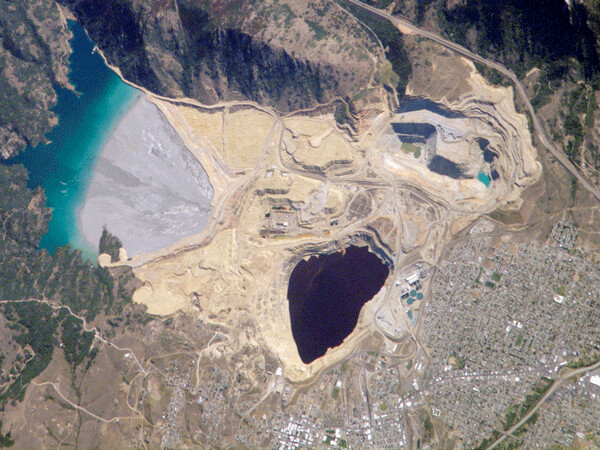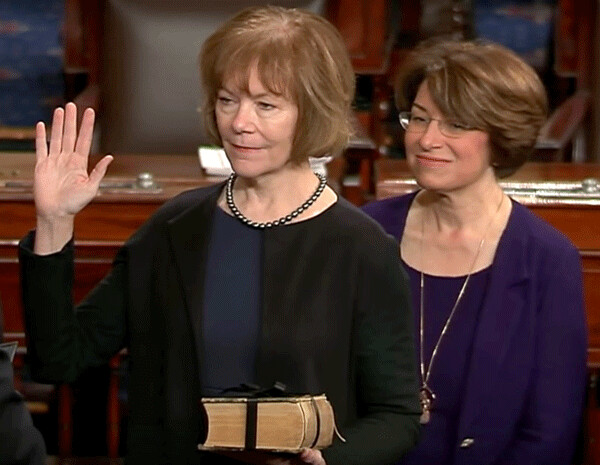News & Articles
Browse all content by date.


On March 23, 2018, the Omnibus Appropriations Bill passed the U.S. Congress and was signed into law. This was considered a must-pass bill; without it, many government operations would not have been funded.
The good news is that H.R. 3115, the Superior National Forest Land Exchange Act of 2017, was not attached to the Omnibus Bill. H.R. 3115 was authored by 8th District Congressman Rick Nolan. It passed the House of Representatives in November of 2017 and was referred to the Senate Committee on Agriculture, Forestry, and Nutrition, with Minnesota Senators Amy Klobuchar and Tina Smith as members.
H.R. 3115 would compel the U.S. Forest Service to trade 6,500 acres of protected Superior National Forest public land to PolyMet, a foreign mining company joint ventured with multinational commodities giant Glencore. PolyMet is seeking to build the first ever copper-nickel sulfide mine in Minnesota. Its proposed open pits would be located on the Laurentian Divide near the Boundary Waters, in the headwaters of the Lake Superior watershed, on what is currently public national forest land.
H.R. 3115 seeks to override four separate environmental lawsuits against the land exchange. This bill would nullify citizen due process as part of PolyMet’s environmental review as granted under the National Environmental Policy Act (NEPA) and other acts. The bill would also set precedence for Congress to circumvent existing laws in order to fast track any controversial and destructive project in favor of a (foreign) corporation over citizen rights and existing laws.
As the deadline for passage of the Omnibus budget bill approached, H.R. 3115 was in a mix of “poison pill” riders being negotiated as attachments to the bill. Voices of opposition to the give-away of public land to PolyMet came from across the state and country. Passage of this bill as a rider, without an individual vote on PolyMet, would allow politicians to garner pro-mining support while skirting widespread public opposition and avoiding accountability for the opening of a toxic sulfide mine in the valuable and vulnerable watersheds of northeast Minnesota.
The good news is that H.R. 3115 wasn’t included as a rider to the budget bill that passed. The bad news is that H.R. 3115 is still alive in the Senate agriculture committee--and could potentially be attached to the Farm Bill or other legislation.
The bad news gets worse. On March 27, a Mesabi Daily News editorial chastised Senators Klobuchar and Smith for failing to pass the special favors bill for PolyMet’s toxic mine. http://www.virginiamn.com/opinion/our-views-senators-dropped-the-ball-on-polymet/article_480f5062-322a-11e8-80ef-1b93f2a2ad3f.html Then in an interview with WDIO news on April 13, Senator Smith admitted that she had worked hard on getting H.R. 3115 attached to the Omnibus bill, and added “But we are going to get this done.” http://www.wdio.com/TWIM/land-exchange-polymet-smith-range/4865493/?cat=10335

More of the Bad
While the maneuver to attach H.R. 3115 for PolyMet to the Omnibus Appropriations Bill failed, a rider authorizing $4 million to help move forward the so called “hybrid proposal” for the Boundary Waters - School Trust Land Exchange did pass.
Dating back to 2009, the Minnesota legislature’s Permanent School Trust Fund Advisory Committee appointed a stakeholder group to develop a plan to address the issue of school trust lands retained inside the Boundary Waters Canoe Area Wilderness (BWCAW) that were not generating money for the trust. The result was a “Hybrid Model” compromise plan, advocating for a one-third land exchange and two-thirds land sale of the retained lands in the Boundary Waters. Approximately 31,000 acres of the state trust lands that were protected inside the BWCAW would be traded for equal value acreage of Superior National Forest lands located outside of the BWCAW. The plan would be contingent upon finding federal funding to buy out the approximately 50,000 remaining acres in the BWCAW, with the money going into the state’s Permanent School Fund.
The U.S. Forest Service ended a public comment period on the Boundary Waters School Trust Land Exchange draft Environmental Impact Statement on October 10, 2017. Approximately 31,000 acres of Superior National Forest lands were chosen by the Minnesota Department of Natural Resources (DNR) as lands desired in the exchange. These lands include parcels that would benefit development of Teck Resources and other copper-nickel sulfide deposits, which lie between those of PolyMet and Twin Metals.
When legislators such as state Senator Tom Bakk claim that “PolyMet is the perfect project, a very small project to see if we can figure out...if we can do this,” he is misleading his constituency (Duluth News Tribune, Rousing support in St. Paul for PolyMet, March 19, 2018). In fact, in a previous candidate interview on October 9, 2016, the Senator said, regarding PolyMet and Twin Metals, “...these two projects will probably run as one someday.”
The DNR, with its Lands and Minerals Division, along with our legislators, implicitly understand that the state’s plan isn’t about one mine. It’s about one giant sulfide mining district extending from Island Lake near Duluth to PolyMet to Birch Lake near the Boundary Waters--one that will pollute two internationally important watersheds, destroy the surface features and habitat of the land for future generations--and damage the health of the children who are supposed to be the beneficiaries of the school trust fund.
To make matters worse, Plan B, a Private Forestland Exchange Alternative, is being developed that would allow for an exchange of school trust lands with a private entity (Potlatch) to replace part of the purchase component of the Hybrid Plan. This would allow for intensive logging in an area near Cook, Minnesota which is courting a wood siding plant. As part of Plan B, private forest lands, along with federal lands, would be converted into state school trust lands, with the purpose of generating maximum money for the school trust by ignoring ecological values.
The Boundary Waters School Trust Land Exchange, along with the additional private land exchange, would fulfill former Representative David Dill’s statement: “We should “mine, log, and lease the hell of out of the land that we get in the change.” (MPR, “Disagreement threatens to derail plan to swap school trust lands, March 7, 2012)
When bad deals leave behind a loss of irreplaceable Superior National Forest lands and their ecological values, a legacy of toxic heavy metals, and the poisoning of our waters--for ourselves and future generations--they become real ugly.
More of the Ugly
On March 6, 2016, Governor Dayton, in a letter to Twin Metals Minnesota, stated, “I have great concerns about the use of state surface lands for mining related activities in close proximity to the Boundary Waters...” To back him up, on April 1, in a commentary in the Star Tribune, former vice-president Walter Mondale added, “... we have learned much about the catastrophic consequences of sulfide-ore mining. Above all else, we have learned that sulfide-ore mining has never — never — been undertaken without serious environmental consequences. Sulfide-ore mining is dangerous everywhere and most dangerous in wet environments.”
Yet on May 3, 2016, DNR Commissioner Tom Landwehr, under the authority of Governor Mark Dayton, deemed the PolyMet final Environmental Impact Statement (EIS) as adequate. This political decision ignored the risks of sulfide mining pollution to all those living within the St. Louis River watershed, for the next 500 years--or more.
Even though seeming to understand the significance of the risks of sulfide mining, on October 24, 2017, as quoted in the Twins Cities Pioneer Press, Governor Dayton determined, “Nothing of that magnitude is risk free but I think it’s a risk worth taking and I support the project.” While advocating to protect the Boundary Waters, Governor Dayton’s risk statement shows blatant disregard for all those living within the Lake Superior watershed.
The Dayton/Landwehr decision pushed PolyMet into the permit-to-mine stage. The race is now on for the agencies to complete as much of the permitting as possible in order to retain Democratic labor support, and to shut down opposition, before the 2018 fall election.
Economies of Scale
In the meantime, on March 26, 2018, PolyMet released its N1-43 Technical Report on its NorthMet mine project. Even before receiving any permit to mine, PolyMet announced plans to increase its proposed 32,000 tons per day operation to 118,000 tons, and is already considering expansion possibilities. This should come as no surprise since PolyMet has consistently noted it would be using only 1/3 of the capacity of the plant it purchased for pennies on the dollar from the bankrupt LTV taconite mining company. The surprise is that PolyMet is announcing mining plan changes and expansions before it has even received a single permit.
While PolyMet could increase its own projected daily production, which could shorten the life span of its mine, it could also offer plant capacity to nearby deposit holders. Teck Resources and Twin Metals have been leasing and exploring areas located near those of PolyMet. Use of the PolyMet plant and facilities by nearby operations would require only a limited amount of additional capital and environmental review, and would open the door for a sulfide mine district.
The permitting of PolyMet has never been about a single mine. It is about a massive sulfide mining district extending from outside Duluth, to PolyMet, to the BWCAW, ultimately polluting both the Lake Superior and Rainy River watersheds. Mineral exploration and leasing is taking place across the entire Arrowhead region. Additional mineral leasing in Aitkin and Itasca counties would create a toxic trail in the Mississippi River watershed.

Conclusion
Our political leaders seem oblivious to the threats to our water and people from proposed sulfide mining, preferring instead to rely upon yet-to-be-developed technologies to clean up a toxic load of heavy metals, sulfates, and other mining associated pollutants. They conveniently ignore the impacts to our land, the loss of wetlands and wildlife, and the loss of wild rice and fish as local high protein food sources and as part of Tribal rights. Concerns about the human health impacts of toxic heavy metals and pollution in our air and water are simply considered as a necessary sacrifice to a poisonous industrial mining zone.
The promotion of H.R 3115 makes Senators Smith and Klobuchar primary players in the plan to open a sulfide mine district in the fragile irreplaceable environment of northeast Minnesota--turning Superior National Forest and its watersheds into a toxic wasteland.
Our Senators have a choice. They can acknowledge polls showing that 74% of Minnesotans oppose PolyMet’s toxic sulfide mine (Minnesota Voters’ Environmental Priorities in 2017, Minnesota Environmental Partnership poll, p. 10). Or they can promote Nolan’s egregious bill, overriding constitutionally established judicial involvement and citizen due process according to existing law, ignoring citizens’ voices and concerns.
Senators Amy Klobuchar and Tina Smith can choose to represent the movement to restore honor to our political system, rather than overriding citizen rights. They can consider the impacts of their decisions upon future generations. As women in leadership positions, they should be aware of the words of Jane Goodall--...” the power [that] people currently have to ‘leave a better world for our children’ comes down to making ethical decisions.”
Will our senators stand up to protect the health and quality of our waters and environment, as well as the health of the children of the future? We are likely to find out before the 2018 elections. Make your voice heard by calling Senator Klobuchar at 202-224-3244 and Senator Smith at 202-224-5641, and let them know you oppose the toxic PolyMet land exchange bill.
For more information, go to www.sosbluewaters.org.
| Tweet |


